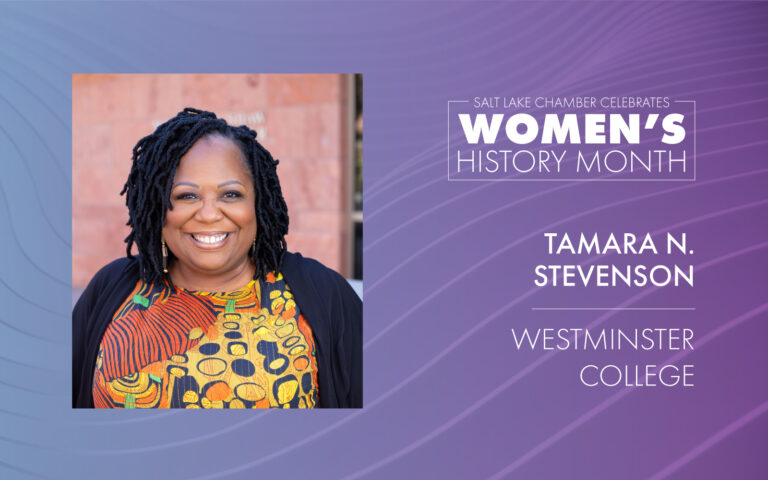During March, the Salt Lake Chamber is highlighting influential women in Utah. By sharing their stories and advice, we hope to bring awareness to the importance of Women’s History Month.
What does Women’s History Month mean to you?
Every March, Women’s History Month evokes tension for me because as a young Black girl growing up in working-class Detroit, I thought Black History Month was the only time when Black women were acknowledged (usually alongside Black men) and Women’s History Month was (primarily) for white women.
As a child, I did not recall seeing women who looked like me highlighted during Women’s History Month compared to Black History Month. For example, I remember learning about Susan B. Anthony and Elizabeth Cady Stanton but nothing about Ida B. Wells-Barnett. This tension takes an emotional toll. I feel forced to align with Women’s History Month’s expectations of gender solidarity despite enduring patterns of exclusion and marginalization of Black women. Despite the efforts of the women’s suffrage movement, resulting in the passage of the 19th Amendment in 1920 granting ALL women the right to vote, Black women could not fully exercise this right until the Voting Rights Act of 1965.
As an adult, I make a conscious effort to seek out those affirming parts of Women’s History Month — learning about and celebrating women who look, sound and feel most like me, which strengthens my willingness and capacity to engage in advocating for all women without having to sacrifice or minimize my identity in the process.
I find Kimberle Crenshaw’s intersectionality framework intellectually and personally comforting because it helps me articulate the tension of my intertwined racialized and gendered identity as a Black woman in American society. Even though I recognize that we all bring our individual lived experiences and perspectives into these conversations, I still grapple with my disconnect to the popularized version of Women’s History Month. However, as we move to create more inclusive and affirming spaces, I ask that women support ALL women by reflecting on the following questions:
- What structures facilitate inclusion and exclusion across race and other intersections of identity? Intersectionality isn’t just about identity; it is about the “compounding experiences of discrimination,” as noted here by Crenshaw.
- Who (and who isn’t) in the room or at the table to inform policy and practice, particularly when such decision-making affects women who are NOT at the table? This phenomenon likely inspired Shirley Chisholm, the first Black U.S. congresswoman in history, the first African American to run for president of the United States and the first woman to run for the Democratic Party’s presidential nomination, to declare: “If they don’t give you a seat at the table, bring a folding chair.”
What are three things you’ve learned from your female mentors?
Three things that I have learned from my female mentors, starting with my mother, is to 1) show up prepared and ready to do the work (even when I am at a table where I had to bring a folding chair), 2) harvest my confidence through subject matter immersion toward expertise and 3) always situate myself in spaces where I am celebrated instead of tolerated.
This guidance has equipped me with the tools and strategies to navigate times of uncertainty. These lessons remind me of my inner strength, which is inherently combined with my skills and talents. These inherent capabilities help me overcome and repurpose challenges into stepping stones of productivity and success, such as when I experienced a second job layoff after earning my master’s degree. I felt professionally useless, personally defeated and emotionally disoriented, wondering how I would provide for myself in the moment and for the rest of my life.
However, at this same time, I was enrolled in a graduate program to study culturally responsive education for multicultural communities, which set the stage for my current and most fulfilling career and life path to date. Investing in myself remains my inner strength to bring my best self to each table where I sit and each table that I create.
*Stay updated on more stories, events and information on Women’s History Month by visiting the Salt Lake Chamber’s Women’s History Month website and engaging in our weekly challenges.


